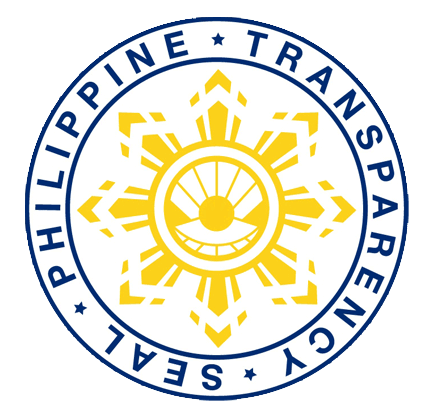Barangay Matugnao
Historical Profile of Barangay Matugnao
Originally, Barangay Matugnao was part of the municipality of Bonifacio, Misamis Occidental. The barangay was once a "sitio" of Barangay Matun-og of the said municipality.
In 1980, Mayor Alfonso Tan of Tangub City initiated a relocation of the boundary of Bonifacio and Tangub City. What used to be the boundary was the Bagumbang River but upon inspection, it was found out that about one-third of Brgy. Matun-og falls within the area of jurisdiction of Tangub City. This was shown that the stone marker ("muhon") was not in the area as what was being shown in the sketch. The process of partition was simple. Mayor Alfonso Tan plainly straightened the boundary, to which Mayor Candia of Bonifacio readily agreed. Later on, when the separation was imposed, half of Barangay Matun-og was claimed by Tangub City and a new barangay was created. The new barangay was named Barangay "Makalas".
In 1985, the name "Makalas" was changed into "Matugnao" relatedly named after "Matun-og", where the barangay was taken from. The change was enacted due to the negative connotation of the term "makalas" which means "squanderer or wastre!" The word "matugnao" in English means "cold or chilly" and "matun-og" refers to "moist or humid." It was a suitable choice in view of the fact that the barangay happened to be situated in an elevated area, thus, enjoying a cool climate. The newly formed barangay was created with 73 households. Mr. Andres S. Teves was appointed by Mayor Alfonso D. Tan as the first barangay captain from the year 1980-1985.
During the Japanese occupation, the Japanese soldiers from Calamba arrived in the area and went all the way to Pagadian. They looked like marching ants from afar but no fighting took place because soldiers and guerrillas stayed away from the civilians. Many Chinese from Ozamiz evacuated to the area where people lived a normal life. However, some people were captured and tied to a tree being suspected as soldiers. A certain man known by his family name Naranjo, bravely defended the Barangay from the Japanese invaders and spearheaded resistance movements as far as to Oroquieta, Calamba and Ozamiz. Thought to possess an amulet, he valiantly resisted the Japanese soldiers.
Matugnao was used to be a thick forest and wild animals like wild boar, deer and tarsier thrive anywhere. Hardwoods were also abundant on the area such as Mahogany, Antipolo and Tanguile. In 1961, Misamis Lumber, a logging company owned by the Capistrano family came. They assiduously logged the area from 1960-1963 and they also logged other parts of Bonifacio. People were hired as workers and many trees were cut and destroyed in the logging process. The massive tree cutting activities later on resulted into concession. Loggers were paid P4.00 pesos daily wage and logs were brought to Ozamiz. A log pond was also made and big trees were deposited in a big river in Bonifacio. When Capistrano logging company left, another logging concession came - the Luna Lumber. The thick forests were gradually deforested due to unabated logging.
"Lumads" (pioneers) of Barangay Matugnao are the Sareno and Sabad families. In 1965, the Calma family came. Soon after, other families from the Visayas islands migrated and populated the place. Relying on agriculture, the people planted corn and coconut progressively because wild pigs would attack the coconut seedlings. There were also Subanens who lived in Matugnao. These peace-loving people built their houses on the hills and lived peacefully with the Visayans. They were practicing some ceremonies and rituals like "boklog". Their dresses were tight in the legs and males wore "tubaw". They chew betel nuts and lime and they also spoke Visayan with accent. They often wove native crafts like "bukag" and sold it to the "parian" (market place). When they left in 1975, they transferred to an area in Molave where they practiced "kaingin" and planted rice.
In 1973, shortly after Martial Law was declared by the late president Ferdinand Marcos, militants amassed the area but civilians were not harassed. However, clashes between government forces and alleged members of New People's Army (NPA) caused trouble and turmoil in the barangay. The government in an effort to pacify the area sent troops that suppressed the rebels. In succeeding years, it was successful in bringing back peace in the Barangay.
At present, Barangay Matugnao is the leading ‘’ube’’ producer in Tangub City and viewed as a potential tourist destination due to its natural scenic spots and cool breeze. Agriculture products like lanzones, rambotan and durian are also grown in the area as part of the local government’s program of developing its agriculture.
Barangay Officials
| Name | Position | |
 |
MARSALA, ANNABELLE TEVES | Punong Barangay |
 |
Barangay Kagawad | Barangay Kagawad |
 |
Barangay Kagawad | Barangay Kagawad |
 |
Barangay Kagawad | Barangay Kagawad |
 |
Barangay Kagawad | Barangay Kagawad |
 |
Barangay Kagawad | Barangay Kagawad |
 |
Barangay Kagawad. | Barangay Kagawad |
 |
Barangay Kagawad | Barangay Kagawad |
 |
SK Chairman | SK Chairman |
 |
Barangay Secretay | Barangay Secretay |
 |
Barangay Treasurer | Barangay Treasurer |
Contacts
| Barangay Hall Address | |
| Email Address | |
| Telephone Number | |
| Cellphone Number | |
| Facebook Page |




